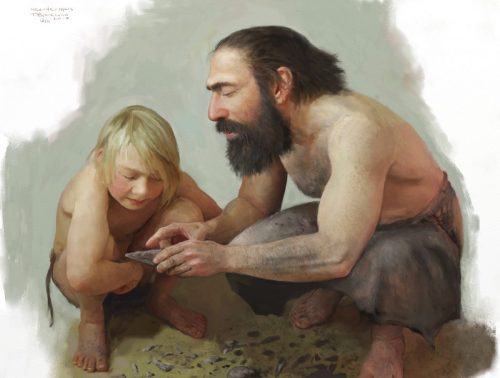Wow. Tom Björklund has been making these amazing paintings to humanize Neandertals. Here are a few examples:


It doesn’t take much — a father teaching his child, a flower in the hair — to wrench one away from the usual distanced view we have of dead bones and stone tools. These were people.
I’d like to see a similar approach to australopithecines. We can see emotions in a chimpanzee — you know that Lucy had just as rich a repertoire of feelings as they do. We can only imagine how they expressed them.





